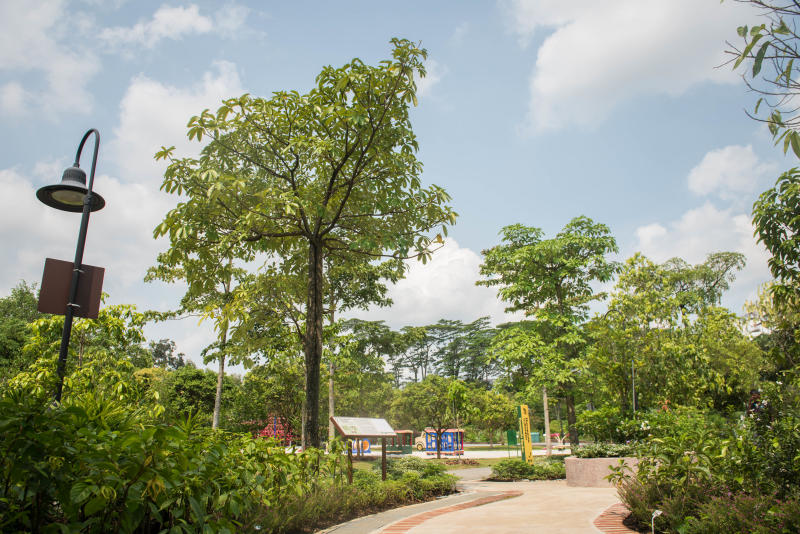NParks to step up use of technology in greenery management
It unveils masterplan to improve inspection, maintenance and conservation methods
Sign up now: Get ST's newsletters delivered to your inbox

NParks will focus on leveraging technologies to improve three main areas - tree management and inspection; nursery management; and nature conservation and biodiversity management.
ST PHOTO: SYAMIL SAPARI
Follow topic:
The inspection and maintenance of Singapore's two million trees along roads and in parks and gardens by the Government is set to become more rigorous and efficient in the next three years, with the greater use of technology.
For instance, the National Parks Board (NParks) is testing an electronic tilt sensor placed on mature trees to help detect any signs of a tree leaning too much, which could cause it to become unstable and topple. With the sensor data, NParks officers can take better measures to prevent accidents.
This was one of the projects NParks unveiled yesterday under a digitalisation masterplan that seeks to use more technologies in greenery management and nature conservation in the next three years.
Under the plan, announced at the International Federation of Landscape Architects World Congress, NParks will consolidate its technology and research initiatives in one database. The database, dubbed Maven, stores information such as park planning and facilities data, tree information, biodiversity data, vegetation maps and satellite maps.
The information can then be accessed by NParks officers on mobile devices to get data on trees, parks and gardens on the go.
NParks will focus on using technology to improve three main areas - tree management and ins-pection, nursery management, and nature conservation and biodiversity management.

The tree management and inspection thrust also focuses on analytics and modelling. One project in development is a model which will provide arborists with an additional tool to determine the maintenance needs of a tree.
A fleet management system is also in development and will consist of global positioning system trackers, sensor devices and video camera recorders installed on vehicles used by NParks contractors performing greenery work.
The cameras can stream live and record videos so that managers can gain critical, time-sensitive information when needed. Video footage can also be used to verify that greenery tasks have been completed, reducing the need for staff to do physical verification. These pro-jects will complement NParks' existing technology initiatives for tree inspection and management.
One project involves tree inspection microdrones. Since last year, the lightweight drones have been used as quick and effective tools to inspect tree crowns from the air.
This allows NParks to get valuable images and videos from perspectives which would not have been possible without a trained arborist physically climbing the tree.
The health of trees was in the spotlight last year after a 40m-tall tembusu heritage tree at the Singapore Botanic Gardens crashed onto unsuspecting visitors, leaving one Indian national dead and four other people injured. NParks later completed an inspection of all the trees in the area and found that they were safe from collapse.
Under the masterplan announced yesterday, NParks is also using technology for nursery management. It is testing a system linked to weather and soil humidity sensors that can trigger the watering of plants during dry weather.
On the conservation side, it is developing a prototype forest fire detection system to continuously monitor Singapore's nature reserves.
The system is expected to be able to differentiate between varying fire conditions, to pre-empt changing weather patterns.The use of such a system cuts the manpower needed for patrolling nature reserves, especially during the dry seasons, and allows the timely deployment of resources for fire-fighting.
• Additional reporting by Derek Wong

